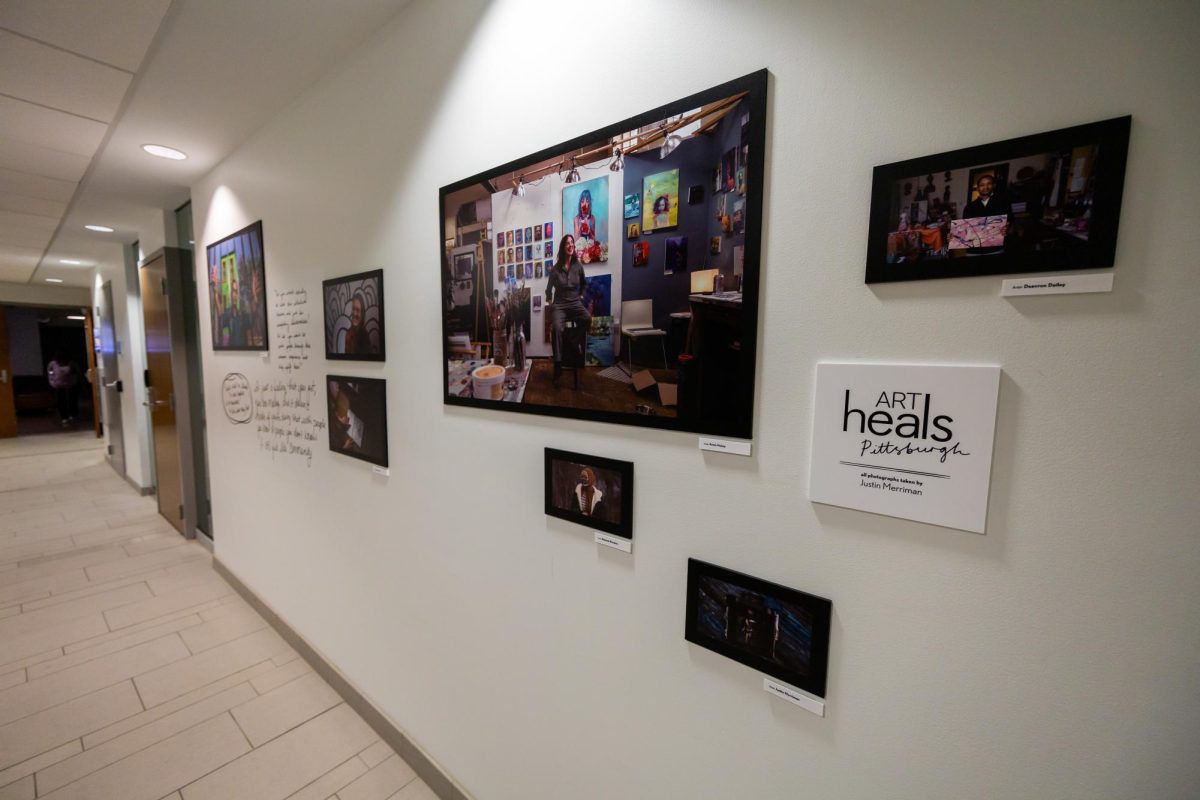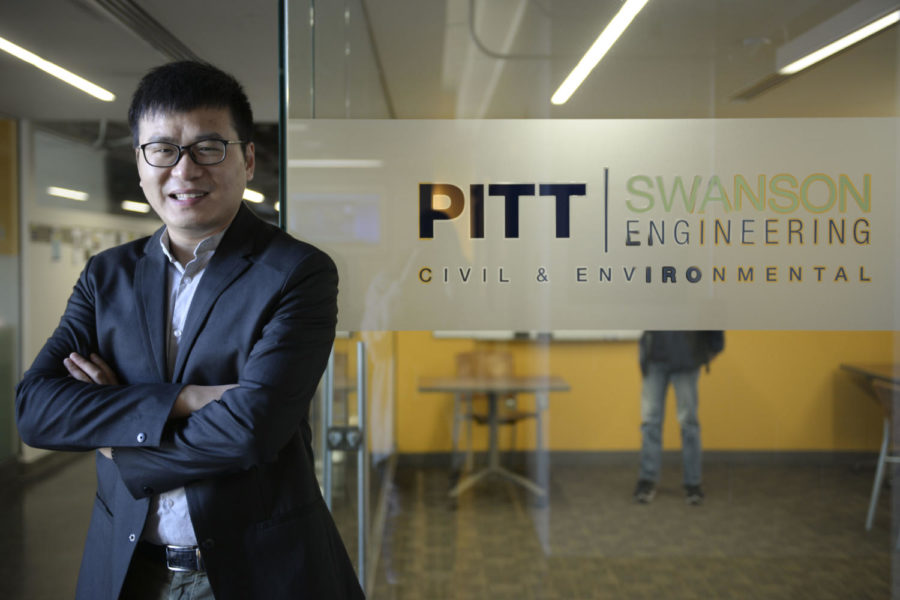Hao Sun sees little difference between monitoring the health of buildings and bridges and monitoring the health of human bodies.
“In the human body, we have the nervous system so when you feel something abnormal or if you’re sick, your nervous system can tell this information,” Sun said. “In terms of detecting building health, we install sensors on structures to formulate a sort of nervous system.”
Hao Sun, an assistant professor in civil and environmental engineering at Pitt, has developed a method that can help detect structural problems in infrastructure after an extreme event like an earthquake or a hurricane. Performing this kind of research at 29 years old earned Sun a slot on Forbes’ 2018 “30 Under 30: Science” list. Forbes considers thousands of submissions and accepts less than four percent for each category. Experts in scientific fields, along with “30 Under 30” alumni, vote on the finalists.
“I feel very lucky,” Sun said. “I know the selection process has been very competitive and they have to select exactly 30 people from the pool. I think getting [on] this list is really encouraging for me to do high-impact research in the future.”
Jeen-Shang Lin, an associate professor in the bioengineering department and one of Sun’s colleagues, said he thinks Sun’s success at such a young age is due to his solid academic training and his extreme determination.
“He graduated from Columbia with very good training and did his postdoc at MIT,” Lin said. “I think he’s a very energetic and dynamic person and is solving a very important problem.”
Sun said he knew he wanted to pursue structural engineering during his undergraduate studies at Hohai University in China after noticing the mass of safety problems with buildings and bridges. He began developing a technique in 2010 while studying at Columbia that can find out if a structure has safety issues, and Forbes has since taken notice. He described the method for which he is being honored as having two major components.
The first involves developing a wireless sensor system that will be built into buildings and bridges, while the second involves data analytics. With his expertise in complex algorithms, along with help from other collaborators in fields such as civil and environmental engineering and computer science, Sun said his proposed method will use big data — extremely large data sets that may be analyzed computationally to reveal patterns — trends and associations.
Lin said Sun’s method is more advanced than previous attempts because Sun’s technology can measure the performance of a structure before, during and after an earthquake hits, whereas seismographs only record data when an earthquake hits.
“[Sun is using] sensors [that] measure the wind velocity, temperature and moisture,” Lin said. “So you measure what the environment is like and then you monitor the structure’s response.”
With these different sensors, Sun said this system can suggest if a building needs to be shut down, repaired or receive maintenance. The sensors can detect the environment’s changing climate — an idea he was inspired to come up with when he worked on a project sponsored by Quid, a platform for scientists, designers and engineers to tackle technical problems using cutting-edge algorithms and technology. Sun worked on a project monitoring the health of buildings in the Quad Cities — a region in Illinois and Iowa that experiences a lot of temperature change.
“[The] sensor system can tell people how this effect propagates and whether after, let’s say 20 years, this building is safe or not,” Sun said, adding that structure in the area should see his sensors soon.
Sun’s method has already been tested on a few real-world structures, such as the Cecil and Ida Green Building — an academic and research building at the Massachusetts Institute of Technology — and other buildings around MIT and Cambridge, Massachusetts. He said his team is currently monitoring the health conditions of these buildings and are awaiting results.
Radisav Vidic, a professor and the department chair for civil and environmental engineering, has known Sun since he interviewed for his teaching position at Pitt. He described Sun as an exciting presence in the engineering department.
On the subject of structural engineering, Vidic said he thinks the people building infrastructure are more focused on the design aspect of the structure than with safety — a problem Sun’s research can help fix.
“We build these buildings, and people assume that they’re gonna stand for 50 or 100 years without any problems, and they usually overdesign everything,” Vidic said. “We’re dealing with human lives living in those buildings.”
Both Vidic and Lin agree Sun’s research reflects well on the engineering department at Pitt and has the potential to make a global impact.
“I’m not surprised he was selected by Forbes’ ‘30 Under 30’ list,” Lin said. “Maybe next time he will be getting 30 Under 35. We have great expectations for him.”
Looking to the future, Sun said he hopes infrastructure will become technologically advanced enough that people will no longer have to be concerned about their safety after a natural disaster.
“Hopefully in many years our city becomes intelligent, so under the threat of extreme events like hurricanes or earthquakes you don’t need to feel too worried about it because you have such a system,” Sun said. “That’s my vision for the future.”
In this vision, Sun said he hopes his research can be used to study buildings on campus.
“For the future, I’m thinking of installing some sensors in our Cathedral of Learning,” Sun said. “I want to see how this building’s performance is, many years since its construction.”



